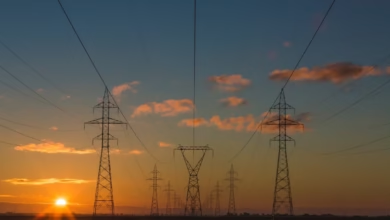Navigating the Energy Transition: The Complex Interplay of OPEC, Renewables, and Global Oil Markets

In an era marked by dynamic shifts in the energy landscape, the oil market stands at a crossroads, influenced by multifaceted factors ranging from geopolitical tensions to the rise of renewable energy technologies. As the Organization of the Petroleum Exporting Countries (OPEC) continues to wield significant power over global oil prices, its decisions reverberate across economies and industries worldwide. Concurrently, the burgeoning trend towards renewable energy is reshaping traditional oil markets, prompting investors and companies alike to rethink their strategies.
This article delves into the intricate interplay between these elements, exploring how OPEC's policies affect oil pricing, the impact of renewable energy on the oil sector, and effective investment strategies in oil futures and exchange-traded funds (ETFs). We will also examine the transformative role of shale oil, the consequences of geopolitical conflicts on supply and demand, and the influence of climate change policies on oil companies' operations. Furthermore, we will consider the future of electric vehicles and their implications for oil consumption, alongside an analysis of the correlation between oil prices and inflation. Join us as we navigate this complex landscape, providing insights into the challenges and opportunities that lie ahead in the oil industry.
- 1. **OPEC's Influence: Navigating the Waves of Global Oil Prices**
- 2. **Renewable Energy Revolution: Disrupting Traditional Oil Markets**
- 3. **Investing in Oil: Strategies Amidst a Shifting Energy Landscape**
1. **OPEC's Influence: Navigating the Waves of Global Oil Prices**
OPEC, the Organization of the Petroleum Exporting Countries, plays a critical role in shaping global oil prices through its production decisions and policies. Established in 1960, OPEC comprises several member countries that collectively control a significant portion of the world's oil reserves. The organization's primary goal is to coordinate and unify petroleum policies among member states to ensure stable oil markets and secure a steady income for oil-producing nations.
OPEC's influence on oil prices primarily stems from its ability to adjust production levels in response to changing market conditions. When OPEC decides to cut production, it typically leads to a decrease in global supply, which can drive prices higher. Conversely, when the organization increases production, it can saturate the market and lead to lower prices. These decisions are often influenced by a complex interplay of factors, including global demand, economic conditions, and geopolitical events.
In recent years, OPEC has faced challenges in maintaining its influence over oil prices due to the rise of non-OPEC oil production, particularly from U.S. shale oil producers. The advent of advanced extraction technologies has allowed shale producers to respond quickly to price fluctuations, often undermining OPEC's attempts to stabilize the market. As a result, the dynamics of supply and demand have become increasingly intricate, with OPEC needing to adapt its strategies to remain relevant.
Additionally, OPEC's decisions are not made in isolation. The organization often collaborates with non-member countries, such as Russia, through initiatives like OPEC+. These alliances aim to enhance market stability by coordinating production cuts or increases across a broader spectrum of oil producers. This collaboration has been particularly significant in times of crisis, such as during the COVID-19 pandemic, when a dramatic decline in demand prompted unprecedented production cuts.
Ultimately, OPEC's influence on global oil prices remains a vital component of the energy landscape. Its ability to navigate the complexities of supply and demand, technological advancements, and geopolitical tensions will continue to shape the future of the oil market and its impact on the global economy. As the world transitions toward renewable energy sources, the organization's role may evolve, but its decisions will likely remain pivotal in the short to medium term.
2. **Renewable Energy Revolution: Disrupting Traditional Oil Markets**
The rise of renewable energy is fundamentally reshaping traditional oil markets, presenting both challenges and opportunities for the oil industry. As governments and consumers increasingly prioritize sustainability, investments in renewable energy technologies—such as solar, wind, and hydroelectric power—are growing at an unprecedented rate. This shift is driven by a combination of policy initiatives aimed at reducing carbon emissions, advancements in technology that have made renewables more cost-competitive, and a shift in consumer preferences towards cleaner energy sources.
The proliferation of electric vehicles (EVs) is a significant factor in this transformation. As battery technology improves and the costs of EVs decline, their adoption is expected to accelerate, reducing the demand for oil in the transportation sector. According to a report from the International Energy Agency (IEA), the number of electric cars on the road could reach 145 million by 2030, significantly impacting oil consumption patterns.
Additionally, many countries are implementing stringent climate policies that aim to phase out fossil fuels and promote renewable energy sources. These policies not only incentivize the transition to cleaner energy but also create regulatory pressures on oil companies, forcing them to adapt or risk obsolescence. Consequently, traditional oil companies are increasingly diversifying their portfolios to include renewable energy projects, exploring avenues such as wind farms, solar installations, and battery storage solutions.
The renewable energy revolution is also altering investment landscapes. Investors are more frequently considering environmental, social, and governance (ESG) factors, prompting a shift away from fossil fuel investments towards sustainable energy options. This trend has led to capital flight from traditional oil firms, reducing their market valuations and access to financing.
In summary, the renewable energy revolution is disrupting traditional oil markets by decreasing demand for oil, reshaping investment strategies, and enforcing a transition towards more sustainable energy practices. As this transformation continues to unfold, oil companies must navigate the complexities of an evolving energy landscape while striving to remain relevant in a world increasingly focused on sustainability.
3. **Investing in Oil: Strategies Amidst a Shifting Energy Landscape**
As the energy landscape evolves, investors seeking opportunities in the oil market must adapt their strategies to navigate the complexities introduced by renewable energy trends, geopolitical dynamics, and shifting consumer preferences. Here are several key strategies for investing in oil futures and ETFs in this changing environment.
First, understanding the fundamentals of oil supply and demand is crucial. Investors should monitor OPEC decisions, as these can have significant short-term impacts on oil prices. By analyzing OPEC's production targets and compliance levels, investors can better anticipate market movements. Additionally, keeping an eye on global economic indicators, such as GDP growth rates and industrial activity, can help forecast oil demand shifts.
Second, diversifying investments through oil-related ETFs can provide exposure to a broader range of companies in the energy sector. These funds often include a mix of large and small oil producers, refining companies, and service providers, allowing for reduced risk compared to investing in individual stocks. Furthermore, some ETFs are specifically designed to focus on companies that prioritize sustainability and green technologies, aligning with the growing emphasis on renewable energy.
Third, employing options trading can be a strategic way to hedge against price volatility. Investors can use options to protect their investments from adverse price movements while maintaining the potential for profit. For example, buying put options allows investors to set a price floor, providing a safety net in case of a significant downturn in the oil market.
Lastly, staying informed about regulatory changes and climate policies is essential. As governments around the world implement measures to combat climate change, the oil industry may face increased scrutiny and potential liabilities. Investors should consider how these policies may affect the long-term viability of oil companies and adapt their portfolios accordingly.
By employing these strategies, investors can better position themselves to navigate the challenges and opportunities presented by the shifting energy landscape while capitalizing on the potential of the oil market.
In conclusion, the dynamics of the oil industry are increasingly complex, influenced by a multitude of factors ranging from OPEC's strategic decisions to the growing prominence of renewable energy sources. As OPEC continues to navigate the delicate balance of supply and demand, its decisions remain a critical driver of global oil prices, impacting economies and consumers alike. At the same time, the renewable energy revolution is challenging traditional oil markets, compelling companies to adapt or risk obsolescence.
Investors must remain vigilant, employing strategic approaches to oil futures and ETFs while considering the shifting energy landscape shaped by geopolitics, shale oil production, and climate change policies. The rise of electric vehicles further complicates the equation, heralding a potential decline in oil demand that could redefine market dynamics in the coming years. Additionally, the correlation between oil prices and inflation underscores the economic significance of these trends, making it essential for stakeholders to be informed and proactive.
As we look to the future, the oil industry stands at a crossroads, where innovation, policy, and market forces converge. By understanding these interconnections and anticipating the implications of emerging trends, investors, policymakers, and industry leaders can better navigate the evolving energy landscape, ensuring resilience and sustainability in an era of unprecedented change.





